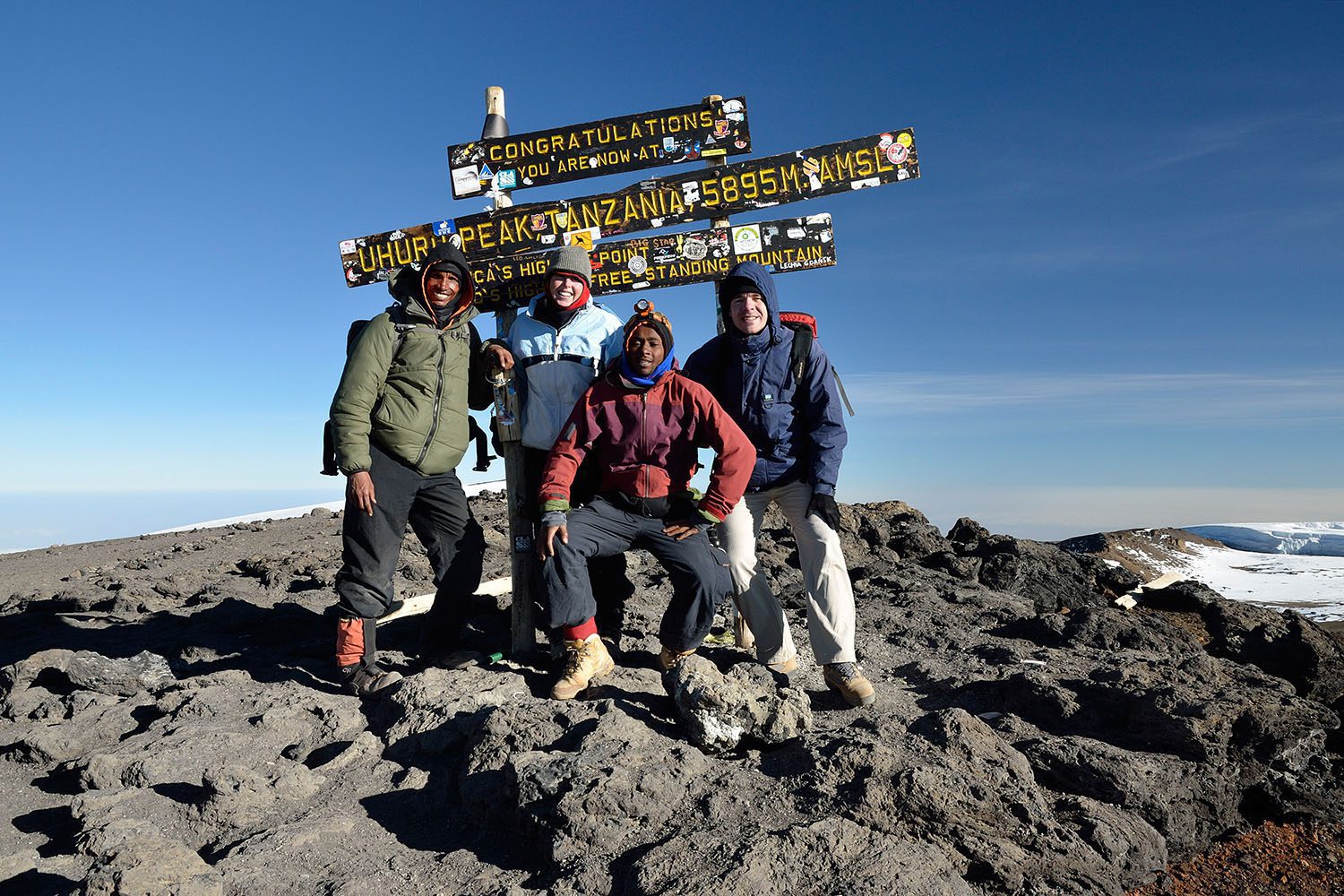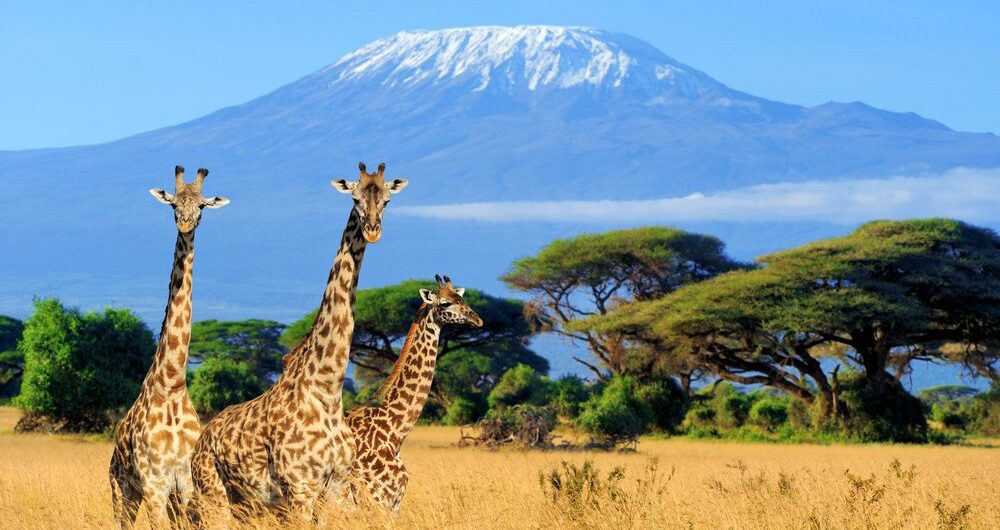Kilimanjaro National Park
Kilimanjaro National Park is located in Tanzania and encompasses the entirety of Mount Kilimanjaro, Africa’s highest peak, which stands at 5,895 meters (19,341 feet). The park covers an area of approximately 1,688 square kilometers (652 square miles) and is a UNESCO World Heritage Site. It is renowned for its diverse ecosystems, ranging from tropical rainforests at the base to alpine desert and arctic conditions near the summit.
Background
- History: Kilimanjaro National Park was established in 1973 and was declared a UNESCO World Heritage Site in 1987. The park was initially designated to protect the area above the 2,700-meter contour line, but in 2005, it was expanded to include the montane forest, which was previously part of the Kilimanjaro Forest Reserve.
- Geology: Mount Kilimanjaro is a stratovolcano composed of three cones: Kibo, Mawenzi, and Shira. Kibo is the highest of the three and the one that most trekkers aim to summit.
How to Access Kilimanjaro National Park
- By Air: The nearest airport is Kilimanjaro International Airport (JRO), located about 45 kilometers (28 miles) from the town of Moshi. From the airport, you can hire a taxi or arrange for a shuttle service to Moshi or directly to the park.
- By Road: The Park is accessible via well-maintained roads from Moshi and Arusha. Buses and taxis are readily available for transportation to the park’s entrance gates.
Wildlife Attractions in Kilimanjaro National Park
- Mammals: The Park hosts a diverse range of mammals. Elephants, buffaloes, and leopards are among the larger species found in the montane forests. Blue monkeys, colobus monkeys, and tree hyraxes thrive in the park’s higher elevations. The lower slopes support various antelope species, including bushbucks and duikers. Rare sightings of servals and civets occur in the moorland. The park’s unique altitude gradient contributes to its rich mammalian biodiversity.
- Birds: The Park is home to 180 bird species. You can see large birds like eagles and vultures. Colorful sunbirds and turacos live in the forests. The malachite sunbird is known for its bright green color. Alpine chat and scarlet-tufted sunbird are found higher up. Many migratory birds visit during certain seasons. The park’s diverse habitats make it a great place for birdwatching.
- Unique Flora: The Park’s diverse ecosystems support unique plant species such as the giant groundsel and Lobelia deckenii, especially adapted to the high-altitude environment.
Activities in Kilimanjaro National Park
- Mountain Climbing: Climbing Mount Kilimanjaro in Kilimanjaro National Park is a popular adventure. The mountain has several routes, including Marangu, Machame, and Lemosho, each offering unique experiences. Climbers pass through different climates, from rainforest to alpine desert, before reaching the icy summit. The climb can take 5 to 9 days, depending on the route and acclimatization needs. Guides and porters help with navigation and carrying gear. No technical climbing skills are required, but it is a physically demanding trek. The best times to climb are during the dry seasons, from January to March and June to October. Reaching the summit, Uhuru Peak, provides stunning views and a sense of great achievement.
- Day Hikes: Day hikes in Kilimanjaro National Park offer a taste of the mountain without summiting. Popular routes include the Marangu route, which allows a hike to Mandara Hut through lush rainforest. Another option is the Shira Plateau hike, providing stunning views of the mountain and diverse flora. These hikes typically last 6-8 hours, making them suitable for visitors with limited time. Hikers can enjoy rich wildlife, beautiful scenery, and a variety of ecosystems. Guides are available to enhance the experience with local knowledge. Day hikes are a great way to explore Kilimanjaro’s lower slopes.
- Wildlife Viewing: Wildlife viewing in Kilimanjaro National Park is a rewarding experience. The park’s diverse habitats, from rainforest to alpine desert, host a variety of animals. Elephants, buffaloes, and leopards are among the larger mammals seen in the lower forests. Blue monkeys, colobus monkeys, and tree hyraxes are commonly spotted in higher elevations. Birdwatchers can enjoy sightings of eagles, turacos, and sunbirds. Guided walks and drives offer opportunities to see different species up close. The park’s unique altitude zones contribute to its rich biodiversity. Wildlife viewing is best early in the morning or late afternoon when animals are most active.
- Cultural Tours: Cultural tours in Kilimanjaro National Park offer insights into the traditions of local communities. Visitors can explore Chagga villages on the mountain’s slopes, learning about their farming practices and lifestyle. Tours often include visits to local markets, traditional dances, and tasting local cuisine. The Chagga Museum in Marangu showcases artifacts and history. Cultural tours provide a deeper understanding of the area’s heritage and people. These tours complement the natural beauty of the park with rich cultural experiences.

Nearby Accommodation Facilities
- Luxury Lodges: Options such as the Kilimanjaro Mountain Resort and the Kibo Palace Hotel offer high-end amenities and stunning views of the mountain.
- Mid-Range Hotels: The Parkview Inn and Kilimanjaro Wonders Hotel in Moshi provide comfortable accommodations with good facilities.
- Budget Options: Hostels and guesthouses such as The Honey Badger Lodge and The White House Hotel cater to budget travelers.
- Camping: For those trekking the mountain, campsites are available along the various climbing routes, managed by the park authorities.
Additional Tips
- Best Time to Visit: The best times to visit are during the dry seasons, from late June to October and from late December to February, when climbing conditions are most favorable.
- Permits and Fees: Trekkers need to arrange permits through a licensed tour operator. The Tanzania National Parks Authority sets fees for climbing and park entry.
- Health Precautions: Altitude sickness is a serious concern, so proper acclimatization is crucial. Vaccinations for yellow fever and malaria prophylaxis are also recommended.
Kilimanjaro National Park offers an unparalleled adventure for nature lovers, trekkers, and those looking to experience one of the most iconic landmarks on the African continent.


Comments